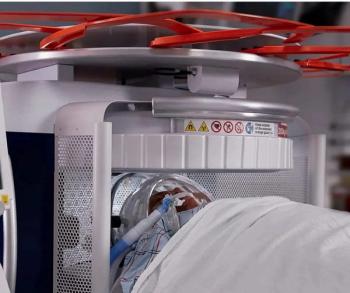
Multicenter Study Assesses Intrasaccular Flow Disruption for Treating Sidewall Aneurysms
Emphasizing the proper diagnostic characterization of sidewall aneurysms, the authors of a new study found no significant differences in occlusion status or complications when they compared the approved use of intrasaccular flow disruption for bifurcation aneurysms to off-label treatment of sidewall aneurysms.
Emerging research suggests that the use of intrasaccular flow disruption in treating bifurcation aneurysms could be extended to the treatment of sidewall aneurysms.
In the retrospective study, researchers assessed the Woven EndoBridge (WEB) device (MicroVention) in the treatment of 683 intracranial aneurysms in 671 patients with a median age of 61. There were 572 bifurcation aneurysms and 111 sidewall aneurysms, according to the study. Utilizing digital subtraction, magnetic resonance, or computed tomography (CT) angiography, the study authors assessed immediate post-procedure images as well as mean follow-up imaging at 11 months for those in the bifurcation aneurysm group and 9.2 months in the group who had sidewall aneurysms.
While adequate occlusion was initially higher postoperatively in the sidewall aneurysm group than those who had bifurcation aneurysms (66.1 percent vs. 43.3 percent), there was no significant difference between the two groups at the last follow-up imaging (89 percent in the sidewall group vs. 85 percent in the bifurcation group). After propensity score matching, the study authors found no significant differences in thromboembolic complication rates (2.2 percent for the sidewall aneurysm group vs. 6.6 percent for the bifurcation aneurysm group) or hemorrhagic complication rates (3.3 percent for both groups).
Pointing to a
“In contrast to the use of stents and neck-bridging devices, dual antiplatelet medication is not necessary for the aneurysm treatment with the WEB device as the device is designed to stay within the limits of the aneurysm. This makes the use of the WEB device more ideal for ruptured aneurysms that are difficult to treat with standard endovascular or open surgical approaches,” wrote Robert Regenhardt, M.D., Ph.D., a neuroendovascular fellow and stroke scientist at Harvard Medical School, and colleagues. “In our study, the rates of thromboembolic and hemorrhagic complication following treatment of ruptured sidewall aneurysms were 5.7% and 2.9%, respectively, and none of the aneurysms re-ruptured after treatment.”
“The most compelling niche of cases for WEB will continue to be ruptured saccular wide-necked aneurysms not amenable to coil placement in which (dual anti-platelet medications are) relatively or absolutely contraindicated.,” wrote Dr. Hetts, a professor in the Division of Neurointerventional Radiology in the Department of Radiology and Biomedical Imaging at the University of California, San Francisco. “Relatively short procedure times for WEB in these patients will be weighed against somewhat low immediate complete angiographic occlusion, the latter being an inherent feature of flow-diverting and flow-disrupting mesh devices.”
In regard to study limitations, the study authors acknowledged that incomplete data sets, unidentified confounders and possible selection bias are commonly associated with retrospective study designs. They also noted possible variability in patient management, which may have included differences in the measurement of aneurysms and device compaction rates, given the inclusion of patients from multiple institutions. The study authors suggested that a future study could possibly compare the use of the WEB device versus flow-diverting stents in the treatment of sidewall aneurysms.
Newsletter
Stay at the forefront of radiology with the Diagnostic Imaging newsletter, delivering the latest news, clinical insights, and imaging advancements for today’s radiologists.




























